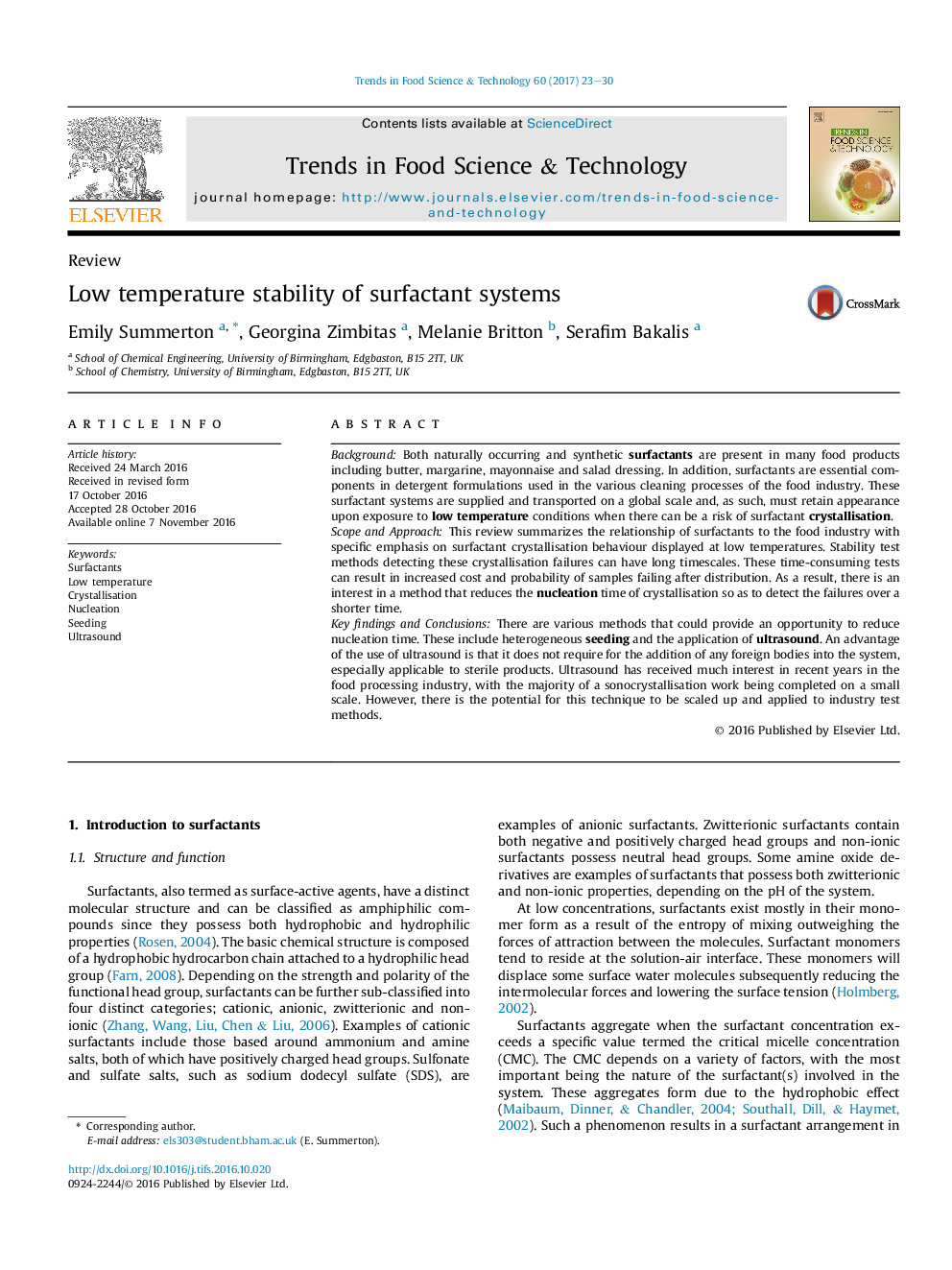| Article ID | Journal | Published Year | Pages | File Type |
|---|---|---|---|---|
| 5523790 | Trends in Food Science & Technology | 2017 | 8 Pages |
â¢Surfactants are present in many food products such as mayonnaise and salad dressing.â¢At low temperatures, crystallisation can be a concern for product stability.â¢Low temperature stability test methods in place for industry products are outlined.â¢Techniques with potential for crystallisation timescale reduction are discussed.
BackgroundBoth naturally occurring and synthetic surfactants are present in many food products including butter, margarine, mayonnaise and salad dressing. In addition, surfactants are essential components in detergent formulations used in the various cleaning processes of the food industry. These surfactant systems are supplied and transported on a global scale and, as such, must retain appearance upon exposure to low temperature conditions when there can be a risk of surfactant crystallisation.Scope and ApproachThis review summarizes the relationship of surfactants to the food industry with specific emphasis on surfactant crystallisation behaviour displayed at low temperatures. Stability test methods detecting these crystallisation failures can have long timescales. These time-consuming tests can result in increased cost and probability of samples failing after distribution. As a result, there is an interest in a method that reduces the nucleation time of crystallisation so as to detect the failures over a shorter time.Key findings and ConclusionsThere are various methods that could provide an opportunity to reduce nucleation time. These include heterogeneous seeding and the application of ultrasound. An advantage of the use of ultrasound is that it does not require for the addition of any foreign bodies into the system, especially applicable to sterile products. Ultrasound has received much interest in recent years in the food processing industry, with the majority of a sonocrystallisation work being completed on a small scale. However, there is the potential for this technique to be scaled up and applied to industry test methods.
